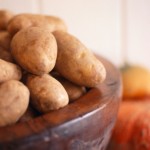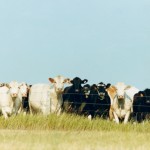Idaho’s Irrigated Farmers Are Positioned To Cash In

Molly Messick / StateImpact Idaho
While farmers across the U.S. are suffering through the worst drought in decades, Idaho farmer Jim Tiede's irrigated wheat field promises a bumper crop.
Today brought new information about the unrelenting drought that’s affecting a broad swath of the country.
The U.S. Department of Agriculture revised down its estimate of domestic corn production to its lowest level in close to 20 years. Global food prices are predicted to rise as a result, but corn futures actually fell today, as analysts predicted high prices would hurt demand.
Here in Idaho, the drought has been less pronounced than it has been in many parts of the U.S. The national drought monitor says conditions across the southern part of the state are “abnormally dry” or experiencing “moderate drought.”
What does that mean for agriculture in southern Idaho’s high desert? It has different effects. Ranchers, for example, are running out of forage for their cattle. That means they will need to rely more on hay, but hay crops aren’t good either, and prices are up. In other parts of the country, this had led ranchers to start selling off their herds.
Dry-land farmers — those who have no irrigation — are also suffering. Wheat planted last fall appears to have pulled through, but some farmers are experiencing near total losses on spring wheat crops.
Irrigated farmers, though: they look positioned to cash in. Many more Idaho acres are dedicated to wheat than corn, but wheat prices tend to follow corn prices, meaning they’re up. And on Idaho’s irrigated farms, crops appear to be doing well.
“I wish we had a lot more $8 grain years,” Power County farmer Jim Tiede told me recently, chuckling. “I’ve sold a lot of wheat in my life, and most of it’s been under $5.” With sugar beet prices also trending upward, Tiede hopes for a very good year.
To hear StateImpact‘s story about dry-land and irrigated farms coping with the drought, tune in to NPR’s Weekend Edition tomorrow morning!

